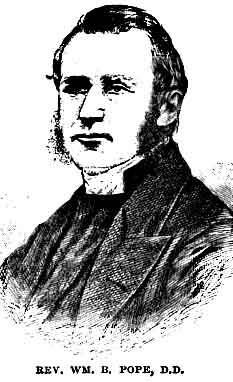Christians commonly presuppose a pretty wide gap between biblical interpretation on the one hand and systematic theology on the other. It’s not just a division of labor, but an actual disciplinary boundary that is supposed to keep things tidy on both sides. The exegetes can keep their heads down and do descriptive-scientific work on the portions of Scripture in front of them, while the theologians can flatter themselves that they use the raw materials of the exegetical work to construct the big picture. It can be a helpful provisional way of dividing up the territory, but fundamentally it’s too tidy to do justice to how Bible scholars and systematic theologians need to relate to each other’s work. Whenever exegetes follow their conclusions out to the big picture, they are verging on systematic theology. And if systematic theologians do their work under the concrete guidance of Scripture, they will hardly be able to describe their work as building up a system from the bits and pieces of exegetical insight handed to them by the Bible scholars. There is a lot more system in Scripture than most people admit, and a good systematic theologian treats Scripture as a guide in form as well as in content; not just for bricks but for blueprints.

I once heard a theologian muse that Lutherans treat Galatians as the key for interpreting much of the Bible, while the Reformed tend to see Ephesians as playing that role. Wesleyans, on the other hand, often point to the first epistle of John as the hot spot in the Bible, where it all happens. Pope is the best example of this.
In his Compendium of Christian Theology, Pope says that in the Bible, “the method of the Inspiring Spirit” is worth paying attention to. This method “was to complete the Christian revelation on the principle of a series of converging developments, the last and highest of which were committed to St. Paul and St. John.” In all of his theologizing, Pope attempts to name those “converging developments” and base his major doctrinal discussions around them. He has especially identified Paul’s final writings and the epistles of John as the decisive points in revelation. The discernment of the converging points, Pope says, should be “be our main guide in the Biblical exposition of theology.” In his mature theology, Pope alludes to the prominence of First John numerous times, and does indeed take some of the leading lines of his thought from the epistle.
Whatever Wesleyan instinct first gave Pope the idea of paying special attention to First John, he certainly did his exegetical homework. In 1846 he published an English translation of Erich Haupt’s German commentary on the book, and in 1859 he brought out a translation of another commentary on the book, by J. H. A. Ebrard. Each of these books is around 400 pages of dense, learned commentary, closely interacting with the Greek text of First John. For the first of the two volumes, by Haupt, Pope wrote a substantial translator’s preface.
In that preface, he calls First John “the closing doctrinal testimony of the last and greatest teacher of the Christian Church,” adding further that we have in it “the final and finishing touches of the whole system of evangelical truth.” Calling the letter “a general review of the whole sum of truth,” he asserts that if you were to lose the whole New Testament except for one book, First John is the one that would give you the best chance of reconstructing the basic message of the whole apostolic witness! “It would, better than any other fragment of the New Testament, supply the place of the entire final revelation to such as might possess it alone.”
Pope admits that First John is not “a general compendium of theology,” since it has a scattered and episodic feel, and was obviously written with the refutation of some specific errors in mind. “But we may say that it traverses, more than any other treatise, the whole field.”
Pope has his eye on three leading ideas in the New Testament, all indicating blessings of union with Christ: “righteousness, sonship, and sanctification.” All three are consummately expressed in this epistle, with sonship receiving the highest praise. John weaves the three together inextricably:
Let the reader begin with ch. 2:29, and go on to ch. 3:5, with this thought in his mind. He finds the three ideas of conformity to law or righteousness, perfection of the filial life in the image of the Son, and sanctification from all sin, distinct and yet blended inextricably. The order is there, righteousness, sonship, sanctification; but the three are one. The terms of the court, the household and the temple, confirm and illustrate each other; and Jesus Christ—the Righteous, the Son of the Father, the Holy One—presides, in the glory of His holiness, over all and over each.
Though he argues that John is the best guide in putting these three ideas together organically, William Burt Pope will not hear of any pitting John against the apostle Paul. The fact that John crowns the New Testament “may be perverted in its application,” he warns. “It may be said that this final testimony of revelation has left behind and rendered obsolete much of St. Paul’s forensic and judicial thought, and sublimated the Gospel into its higher and more simple character. But this is a mistake. This Epistle perfects all, but not by suppressing anything.“